Using equipment, such as mats, during a swim lesson, can be a rewarding and interesting part of your lesson. It’s important that all equipment used in your lesson has a swimming related purpose. You may have the world’s cutest toys but if you’re not using them to further your swimmer’s skills, you are wasting your swimmer’s time!
Mats are a great addition to any swimming program. There are so many ways you could be using mats during a swim lesson. This article will discuss how using mats during a swim lesson are endless, and bound only by the teacher’s imagination.
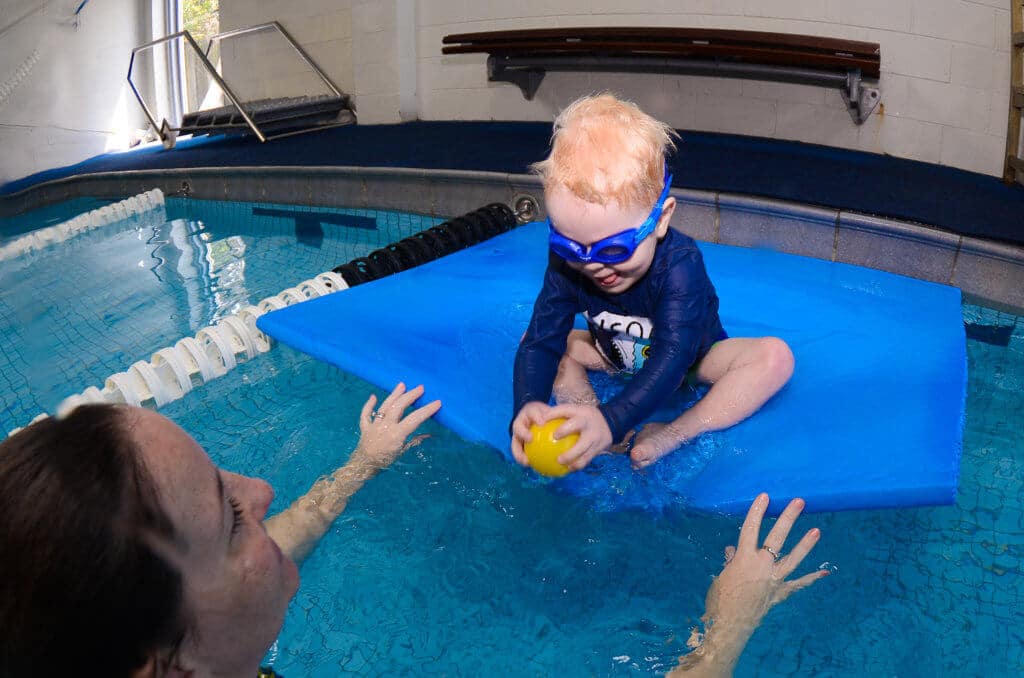
Uses for Using Mats During a Swim Lesson
Swimming Under the Bridge – create a bridge with your mat by butting it up against one wall, and pushing the other end to create an arc for swimmers to go through. This can be a good activity for breath control – eyes in under the bridge. Note that you will be taken away from your class, as you will be holding “the bridge” in place. Ensure your class is independent enough to move under the bridge without any help, before attempting this activity.
Run Run Run – the mat can be placed against the wall while swimmers stand outside the pool. They then step down onto the mat, run to the end and jump/fall off. Swimmers must then return to the top of the water, and the side, by kicking and paddling. Ensure this activity is done in deep water, as larger swimmers can go quite deep when jumping off the mat. Supervision is essential, as instructors need to ensure swimmers are out of the way of the next participant.
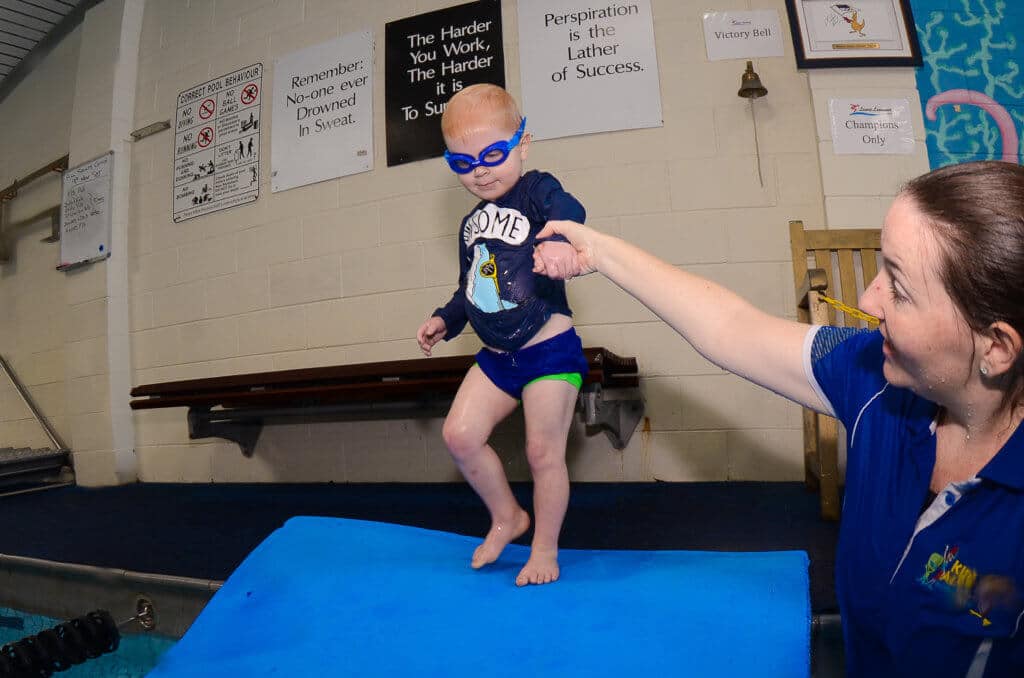
Floating/Kicking assistance – swimmers can climb up and lay down on the mat, in a prone position, to practice their floating. Timid swimmers may like the feeling of being on top of the water, with an aid to help them float. Experienced swimmers can lie on the mat with their legs off the edge, and practice their kicks in one direction. They can then ‘fall off’, or have the teacher gently ‘tip them off’. They can practice their kicking/paddles propulsion in the other direction, and go back to the start.
Giant Kickboard – swimmers may lie in the water with their fingers over the top of the mat, like a kickboard. They can all kick with their eyes in the water, in wave formation at the same time, whilst using the mat as a large kickboard. This can be an exciting activity and can be used to enhance kicking skills by having fun with your swimmers.
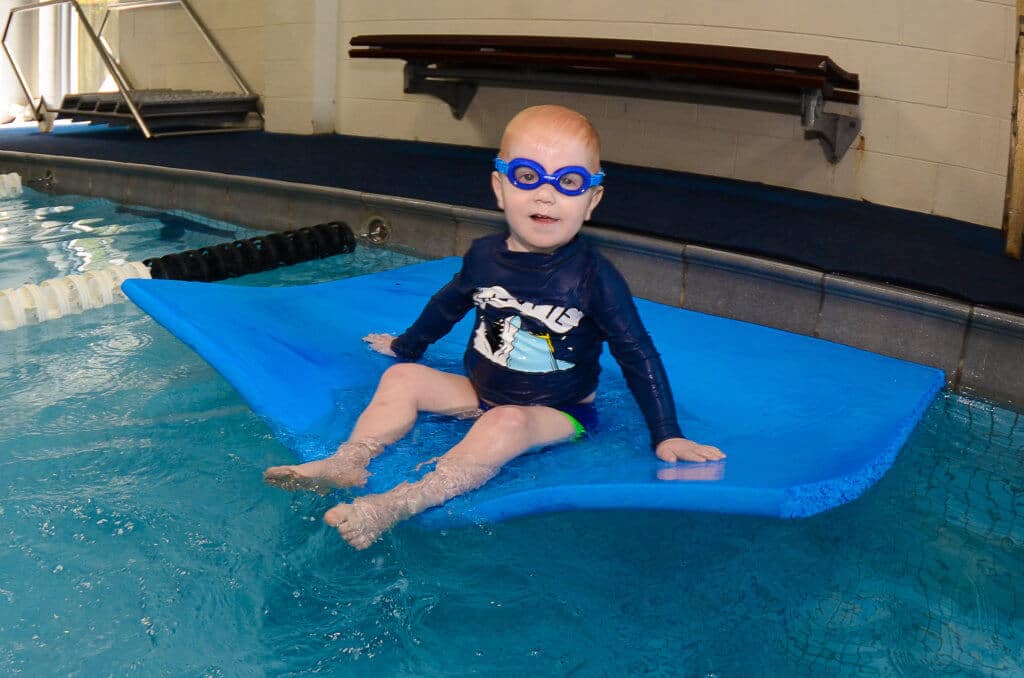
More Uses for Mats in Swim Lessons
Climb Out & Turn Around – this is a great introduction to the safety skill of climbing out of the pool. As the mat is close to the water, younger swimmers will have more success working on their climbing skills. Using trigger words such as ‘elbow, elbow, tummy, knee’ will help them understand the climbing process. Once the swimmer has climbed out of the water they can then turn around and swim back to their parent. With a large enough mat all swimmers can participate in this activity at the same time, which will help the instructor with supervision and feedback opportunities.
Swim Out and Climb Up – teachers can use this activity as part of a circuit so they can keep their class moving and practicing this important safety skill. Young swimmers can climb up on the mat, crawl/walk to the other side and jump/slide off to their parents at the other side. This is an extension to the previous activity where the child not only has to use the safety skill of climbing up but moving along to the other side.
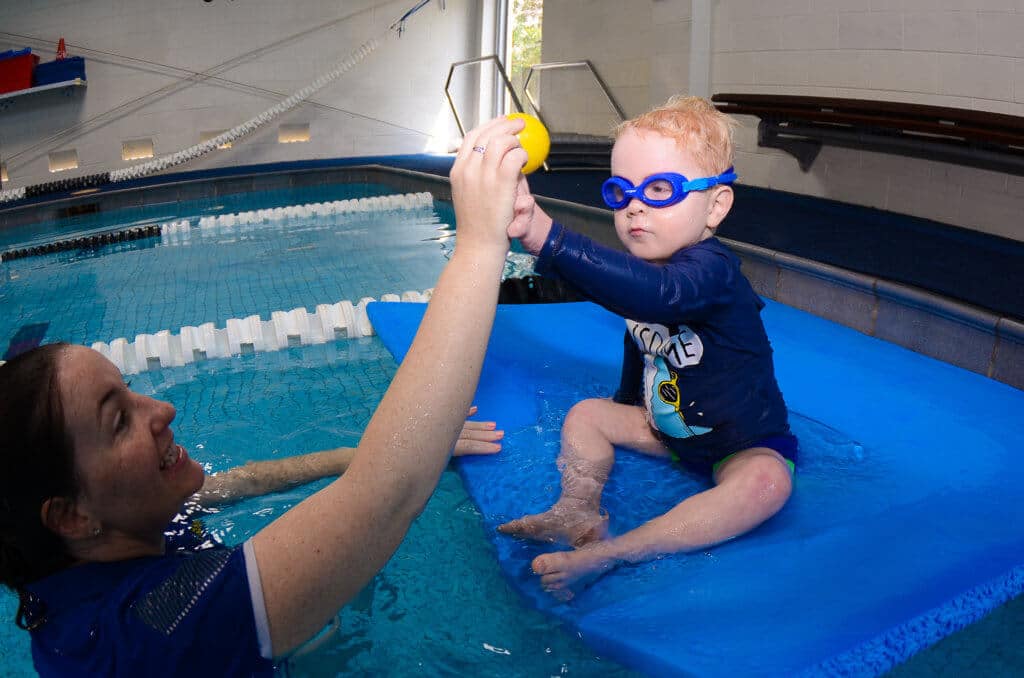
Tunnel work – this activity is the same as ‘swimming under the bridge’ discussed earlier in the article. Swimmers are asked to ‘go through the tunnel’ and often find it a fun and exciting activity. It can be a great way to keep swimmers moving in a circular pattern – one following the next. Swimmers can be helped through the tunnel or independently swim to parent, who is standing underneath or on the other side of the tunnel. It can also be a great distraction for back floating and kicking under the bridge – the infant who is resisting back floating moves through the tunnel and watches the colours above or discusses with parent or instructor and forgets about fighting against this activity. Instructor should ensure they are in a correct position for supervision.
How Using Mats can Help Swimmers
Core strength activities – there are many activities that instructors can schedule for core strength activities with a mat. Younger infants will benefit from lying on their front and back on the mat in the water. They can also sit up on the mat. All of these activities will work their core as they work on their stability on the mat in the water. Moving younger infants from a lying position on their backs to a sitting position can also help in core strength activities. Older swimmers can work on their standing balance. As they improve with this skill the instructor can wiggle the mat a little in a supervised setting.
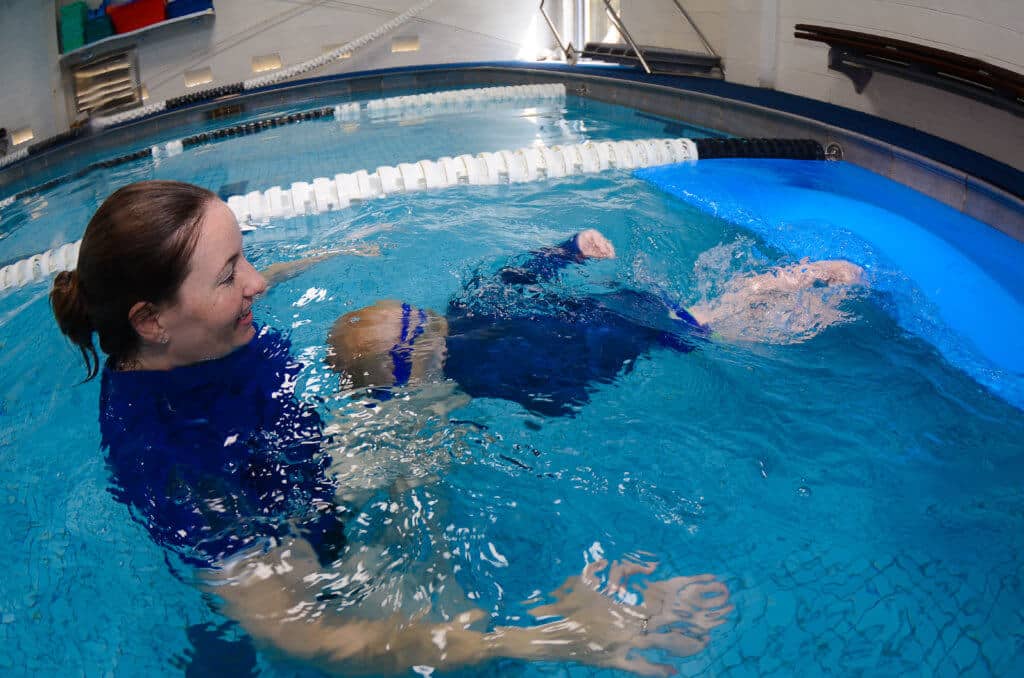
Assisted Kicking – by placing all swimmers on the mat with their feet off the edge the instructor can observe them and hold the mate facing the swimmers while the parents stand behind and help them with their kicking. Parents can manipulate the kicking one way and swimmers can attempt to kick unassisted on the way back. This is a great activity to keep your group together, watch and observe progress and give constant feedback to the group.
It is hoped that you have gained some ideas from this article about using mats as a teaching aid within your lesson. All equipment can help but it is very important to make sure that it is used under supervision within your lesson.
The more experience an instructor has, the more ideas they will have about using mats within their lesson. Don’t be afraid to experiment – it is how we learn what works for us as instructors. Good luck using mats within your lesson!
How do you keep swimmers interested and engaged? Share your ideas in the comments below.
Laurie Lawrence
